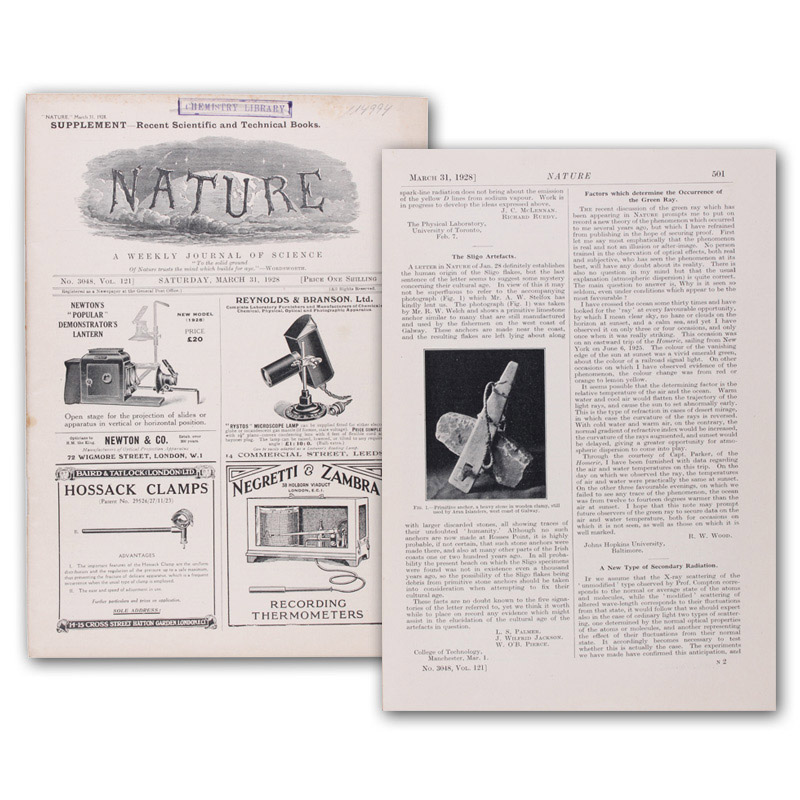114994-01
A New Type of Secondary Radiation. S. 501-502. In: Nature. Vol. 121, No. 3048.
(London, Macmillan), 1928. - (26,5 x 19 cm). SS. 489-524. Mit Abbildungen. Original-Broschur.
Erste Ausgabe dieser berühmten Veröffentlichung über die Entdeckung des Raman-Effektes. Raman erhält dafür 1930 den Nobelpreis für Physik. - "With his associates Raman studied the scattering of light of available frequencies by a number of substances, particularly fluids. In April 1923 Raman's associate K. R. Ramanathan observed a weak secondary radiation, shifted in wavelength along with normally scattered light, which was attributed to 'fluorescence.' S. Venkateswaran then noticed that highly purified glycerin does not appear blue under sunlight, but rather radiates a strongly polarized, brilliant green light. Raman and K. S. Krishnan then undertook to isolate the effect under impeccable experimental conditions. They employed complementary light filters placed in the paths of the incident and scattered light, respectively, and observed a 'new type of secondary radiation' from the scattering of focused beams of sunlight in both carefully purified liquid and dust-free air. They reported this discovery in a letter to 'Nature' in February 1928" (DSB). - Stempel auf Einband, sonst gut erhalten. - DSB 11, 264
A New Type of Secondary Radiation. S. 501-502. In: Nature. Vol. 121, No. 3048.
(London, Macmillan), 1928. - (26,5 x 19 cm). SS. 489-524. Mit Abbildungen. Original-Broschur.
Erste Ausgabe dieser berühmten Veröffentlichung über die Entdeckung des Raman-Effektes. Raman erhält dafür 1930 den Nobelpreis für Physik. - "With his associates Raman studied the scattering of light of available frequencies by a number of substances, particularly fluids. In April 1923 Raman's associate K. R. Ramanathan observed a weak secondary radiation, shifted in wavelength along with normally scattered light, which was attributed to 'fluorescence.' S. Venkateswaran then noticed that highly purified glycerin does not appear blue under sunlight, but rather radiates a strongly polarized, brilliant green light. Raman and K. S. Krishnan then undertook to isolate the effect under impeccable experimental conditions. They employed complementary light filters placed in the paths of the incident and scattered light, respectively, and observed a 'new type of secondary radiation' from the scattering of focused beams of sunlight in both carefully purified liquid and dust-free air. They reported this discovery in a letter to 'Nature' in February 1928" (DSB). - Stempel auf Einband, sonst gut erhalten. - DSB 11, 264
350 €

